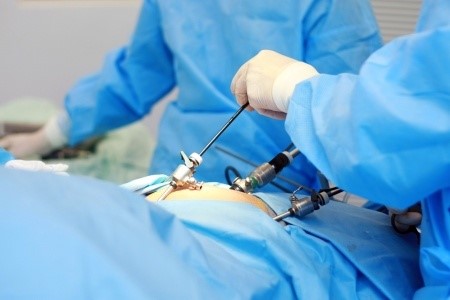
Fertility Promoting Laparoscopic Surgeries (FPLS)

For many women, getting pregnant does not come easily. And for a woman who is struggling to conceive, travelling that path can be a lonely one filled with frustration. There is a huge financial involvement for its diagnosis and treatment as well. The main goal of fertility promoting laparoscopic surgeries is to enhance fertility by ensuring a patent and functional pathway for the sperm to reach the egg and a safe implantation into the uterine cavity.
The surgically treatable causes of infertility include
- Women with severe pain and cystic or deep endometriosis,
- Polycystic Ovarian Syndrome,
- Severe Uterine septum
- Uterine Myoma
- Endometrial Polyps and Asherman’s Syndrome
- Adhesions around the tubes, ovaries
- Tubal recanalization in women with tubal sterilization
In many cases, laparotomy, which involves a larger abdominal incision than laparoscopy and an approximately six-week recovery, is no longer necessary since many problems can now be treated laparoscopically.
Fertility promoting laparoscopic surgery (FPLS) in women may be listed as following
Laparoscopic treatment for subfertility associated with endometriosis- Laparoscopic excision/ ablation and adhesiolysis improve the chance for live birth and ongoing pregnancy. Surgery on the ovaries in endometriosis may lead to diminution of ovarian function or ovarian reserve. If adhesions are extensive, IVF and ET are better choice.
Surgery seems indicated beyond a reasonable doubt in following cases
- Hysteroscopic removal of polyps visible on ultrasound increases the pregnancy rates.
- Hysteroscopy prior to IVF doubles the clinical pregnancy rates in patients with 2 failed IVF attempts.
- Laparoscopic salpingectomy for hydrosalpinges prior to IVF significantly improves the chances for pregnancy.
- Fibroids do not mean myomectomy always for infertile women. Myomectomy for intramural fibroid that distorts uterine cavity. Hysteroscopic myomectomy doubles the pregnancy rate compared to expectant management in subfertile women with submucosal fibroids.
- Tubal re-anastomosis in women with tubal surgery – Unnoticed minor tubal defects are often stamped as unexplained infertility and subjected to IVF program. The fallopian tube has multiple functions in achieving pregnancy. The surgical approach should be directed to get all the tubal functions back in a damaged or diseased tube. Fimbrial pathologies are corrected by fimbriolysis. Correction of minor tubal defects and ovarian pathology gives good success rate. After reproductive surgery over 90% of the subsequent spontaneous pregnancies occur within 6–12 months.
- Laparoscopic drilling for induction of ovulation in PCOS- most specialists prefer ovarian stimulation and IVF compared to surgery because it can reduce ovarian reserve.
Surgical options for men
Some causes of infertility are structural and can be corrected by surgery, frequently with outpatient or same-day procedures.
- Diagnostic surgery
Testicular biopsy and fine needle aspiration. - Surgery to improve sperm production
Varicocele repair – Role of surgery remains highly individualized and must be considered in the setting of the female partner’s age and contribution to the couple’s infertility. - Surgery to improve sperm delivery
Sperm duct microsurgery – removes obstructions in the ductal system (ejaculatory duct) that carries sperm to the penis. - Surgery to retrieve sperm for use with In vitro fertilization and Intracytoplasmic sperm injection (IVF–ICSI)
Microsurgical sperm retrieval – Healthy sperm can be extracted surgically from the sperm ducts in the testicle. Any sperm retrieved surgically can only be used with IVF-ICSI.
Who can benefit?
- Men with no sperm in the ejaculate
- Severe erectile dysfunction or other medical problems prohibiting ejaculation
- Vasectomy reversal
Conclusion
Compared to IVF, reproductive surgery has the potential to restore the natural procreation of the subfertile couple leading to several conceptions after one successful intervention. Repeated success can however only be achieved by effective interventions.
